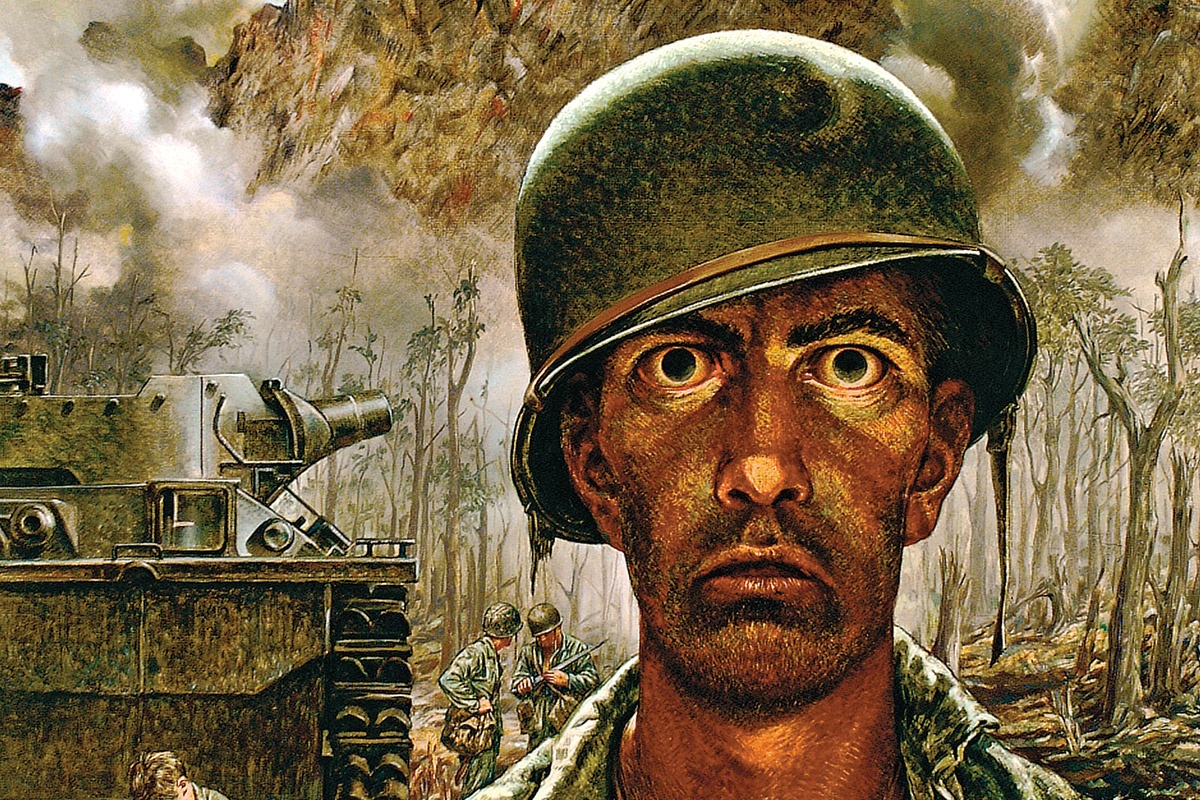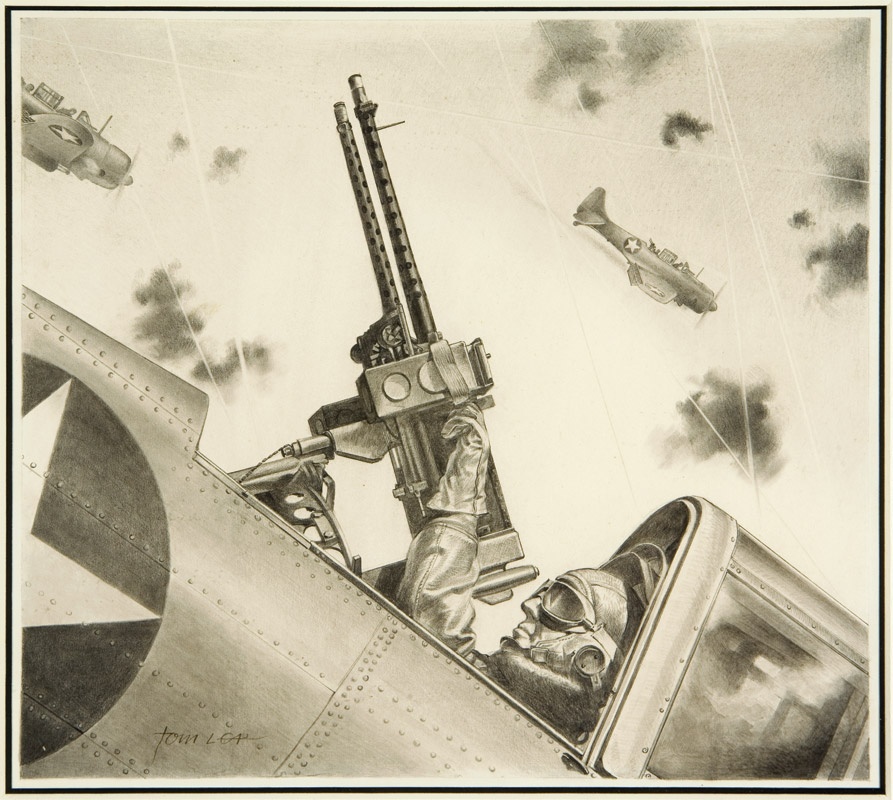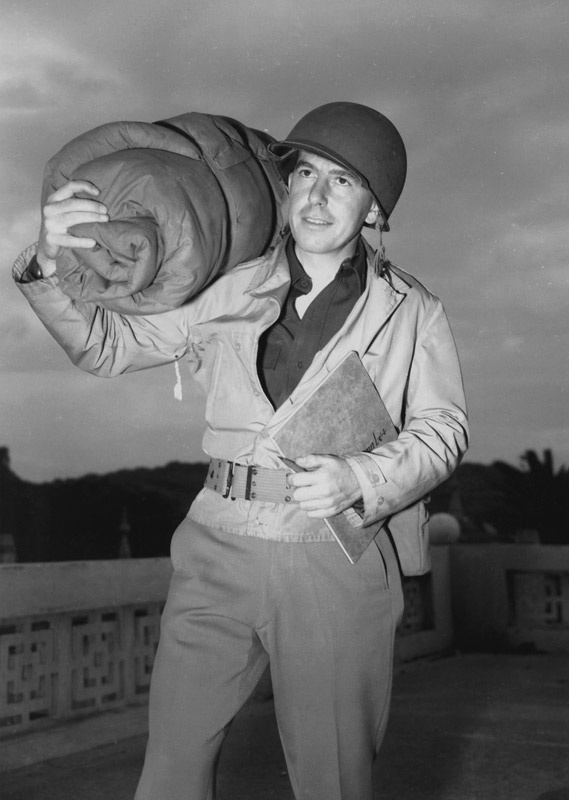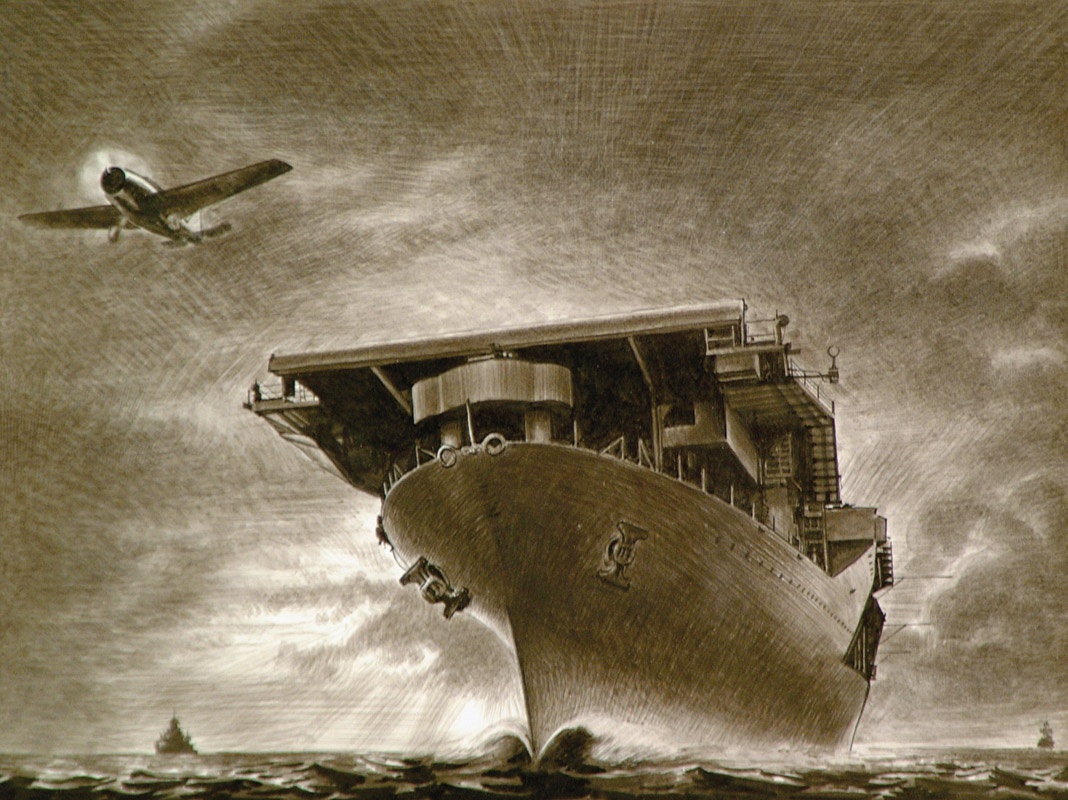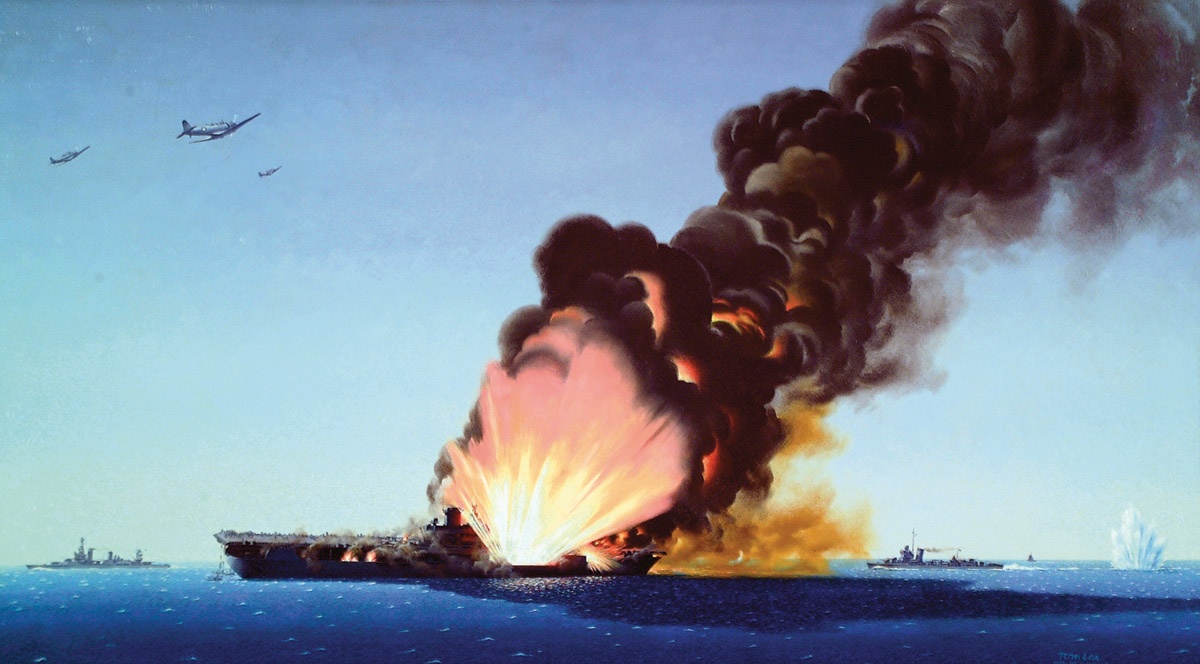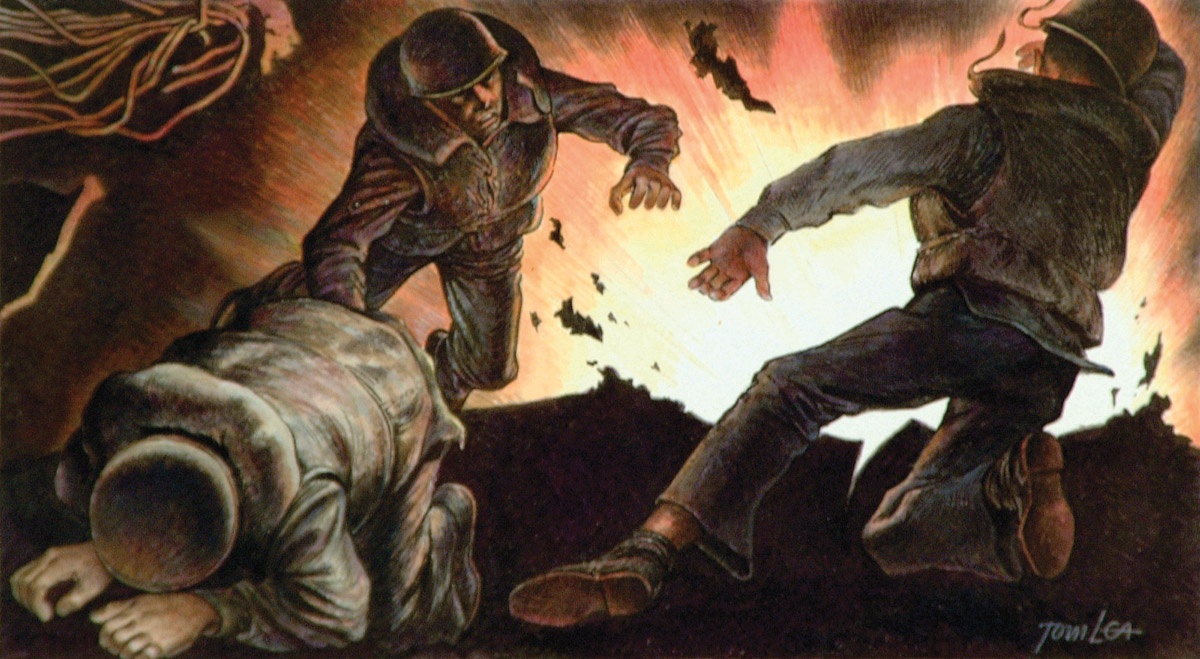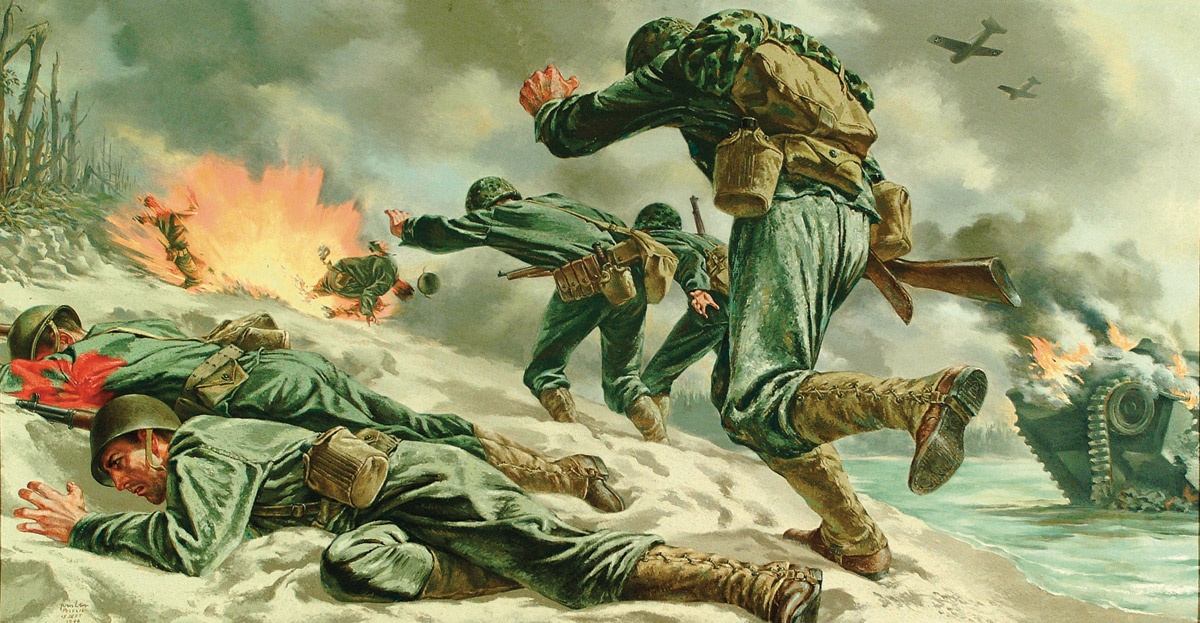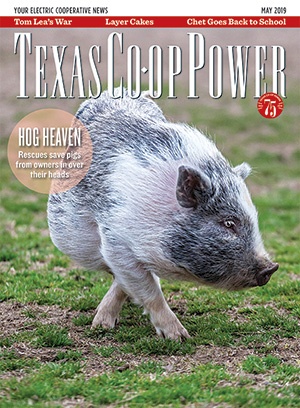Tom Lea—noted muralist, author and war correspondent—grew up in El Paso, spending his childhood in the shadow of the Mexican Revolution during the second decade of the 20th century. Lea, son of a prominent lawyer who served two years as El Paso mayor, enjoyed the safety of an affluent household despite the dangers posed by the revolution’s proximity. Decades later, he would witness a battlefront once again and provide Americans with a realistic and compassionate view of World War II as a war correspondent and illustrator for Life magazine.
Lea’s chronicle of the tragedies and victories of the war created perhaps his most compelling artworks. The images he produced on the battlefront captured the heartfelt emotions of conflict in real time and under duress.
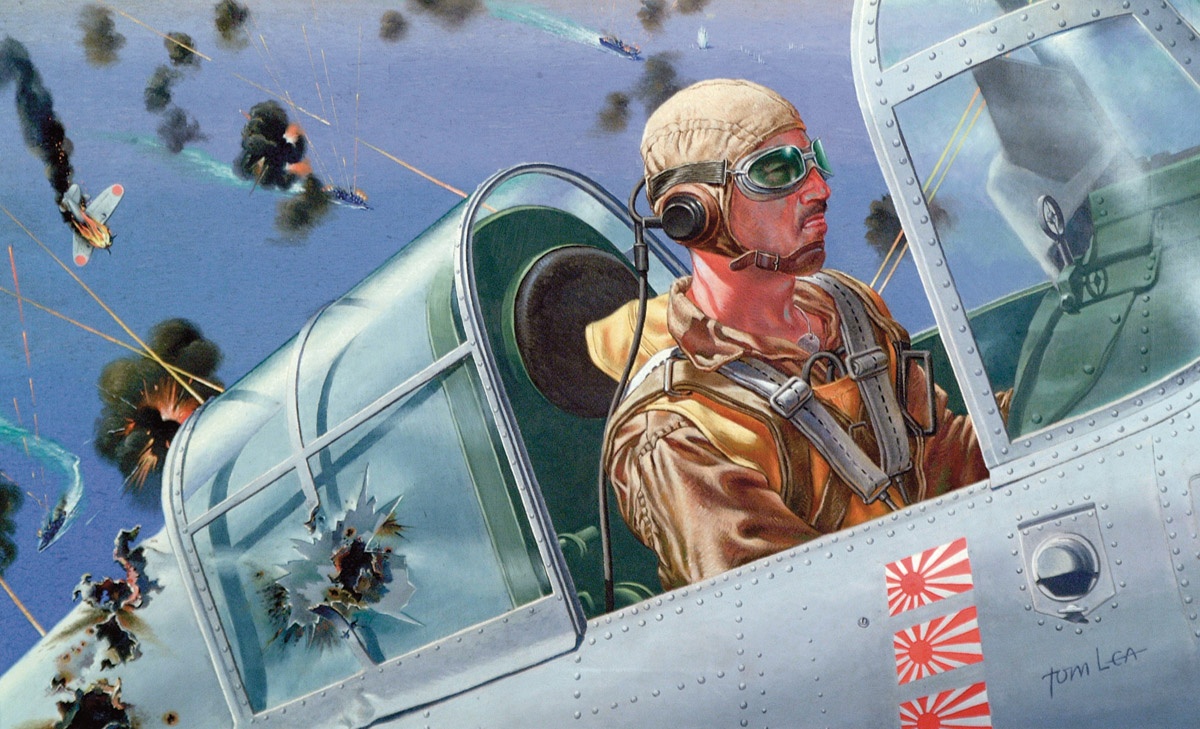
Web Extra: Fighter pilot A.C. Emerson defends the USS Hornet.
Courtesy Texas A&M University Press
“Tom Lea started the artist-correspondent program for Life magazine as an ‘embed,’ recording real battles, not just paintings from news reports,” explains Adair Margo, founder of the Tom Lea Institute in El Paso, in an email. “It remained the most vivid part of his life and turned him from painting to writing. After WWII, Tom knew he needed words, not only paint, to express mankind’s living and dying.”
As Life described to readers in 1941, Lea was one of several artists whom the magazine commissioned to create “America’s first gallery of defense art.” The assignment was deemed a success, and soon Life had turned Lea into a special kind of war correspondent, traveling to the North Atlantic and South Pacific. He made sketches of what he saw. In one instance, after the ship on which he had been embedded was sunk, along with the photographic files on board, Lea’s drawings became the only record of the engagement.
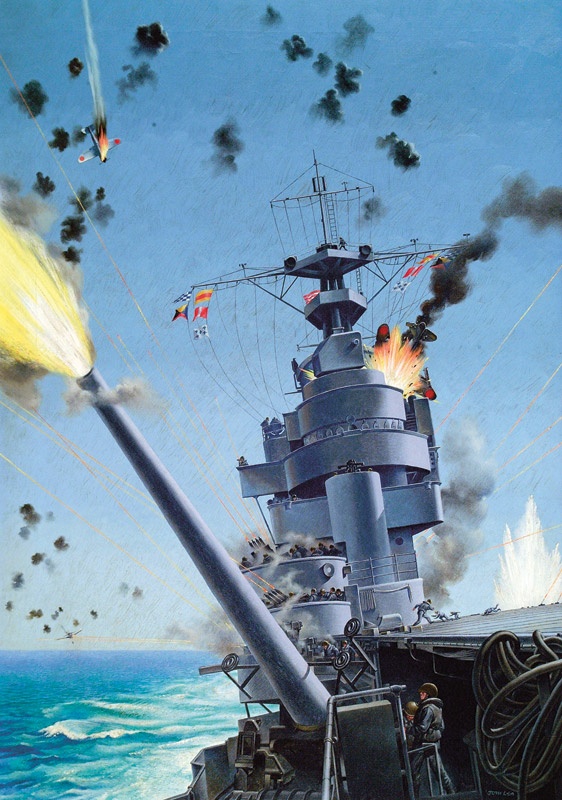
Fighting Hornet depicts the height of the Battle of Santa Cruz.
Courtesy Texas A&M University Press
“In the fall of 1941,” Lea wrote, “I went to sea aboard a U.S. Navy destroyer on duty in the submarine-haunted North Atlantic, as an Accredited War Artist-Correspondent of Life Magazine … I became, for deeply felt reasons, an eye-witness reporter, in drawings and paintings, of men and their machines waging a war worldwide.”
Lea’s work from this period, 82 pieces in all, portrays the war at its worst and Lea’s illustrative skills at their best. Unsparing in its depiction of the true human cost of battle, it expresses an understanding of tragedy and pathos that required an unflinching eye, never turning away until an image was completed.
In 2008, Texas A&M University Press published a collection of Lea’s remarkable sketches and powerful paintings and his firsthand written accounts of his assignments for Life. Margo wrote the foreword for the book.
A collection of his work is archived at the U.S. Army Center of Military History at Fort Belvoir, Virginia, and it tours periodically, including an exhibition at Fredericksburg’s National Museum of the Pacific War.
“Although I had seen pictures of Tom Lea’s World War II work several times, I was stunned when I viewed the originals at the National Museum of the Pacific War exhibition,” says retired Marine Corps Gen. Michael William Hagee, president and CEO of the Admiral Nimitz Foundation, which supports the museum. “Tom had a unique ability to bring the horror of war and the sacrifice and dedication of those who served and fought to his art. He obviously understood the fear, bravery, compassion and camaraderie of individuals on the battlefield. Having served in several conflicts, I have seen no artist that captures better the emotions one experiences on the faces of his subjects.”
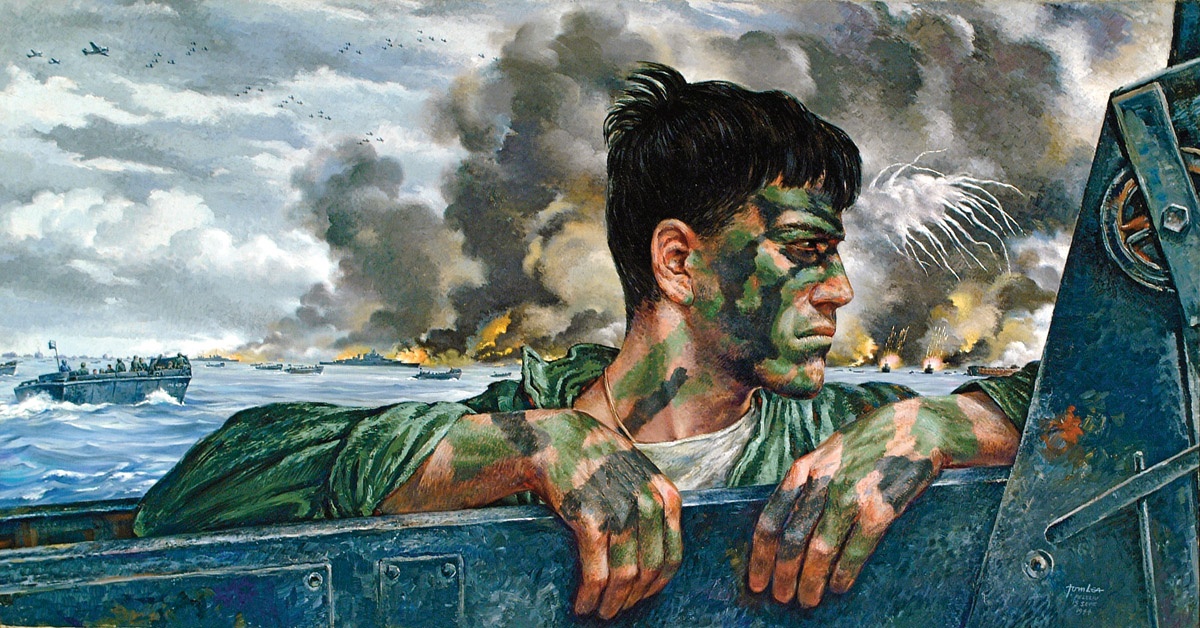
Going In shows a Marine during the landing on Peleliu in 1944.
Courtesy Texas A&M University Press
Lea’s creative training began at 18, with two years of formal instruction at the Art Institute of Chicago followed by a five-year apprenticeship with Chicago muralist John Norton and a period in Italy studying Renaissance frescoes. He returned to El Paso in his late 20s, an accomplished professional with a number of major works to his name.
“A singular aspect of Lea, sometimes overlooked, is the sheer versatility of his creative talents,” says Victoria Ramirez, director of the El Paso Museum of Art. “Along with his prodigious output as a visual artist, he wrote novels, some of which are considered classics of Southwest literature. And in the realm of art, he was a master draftsman, illustrator and artist-reporter during World War II in addition to his substantial work in easel painting and murals.”
Lea’s considerable achievements made the founding of his namesake institute a necessity as much as an opportunity. The Tom Lea Institute, founded in 2009, is dedicated to documenting, exhibiting and sharing his works through a digital library, exhibitions and publications.
The institute partners with academic foundations statewide that archive Lea’s work, including the El Paso Museum of Art, the University of Texas at El Paso and the Harry Ransom Center at the University of Texas at Austin. The institute was also a key component to realizing its director’s personal vision.
“In founding the Tom Lea Institute,” Margo explains, “I’ve found joy in sharing a person and a place that I love.” Texans who love history and art will no doubt appreciate her efforts.
Photographer, author and artist E. Dan Klepper lives in Marathon.
